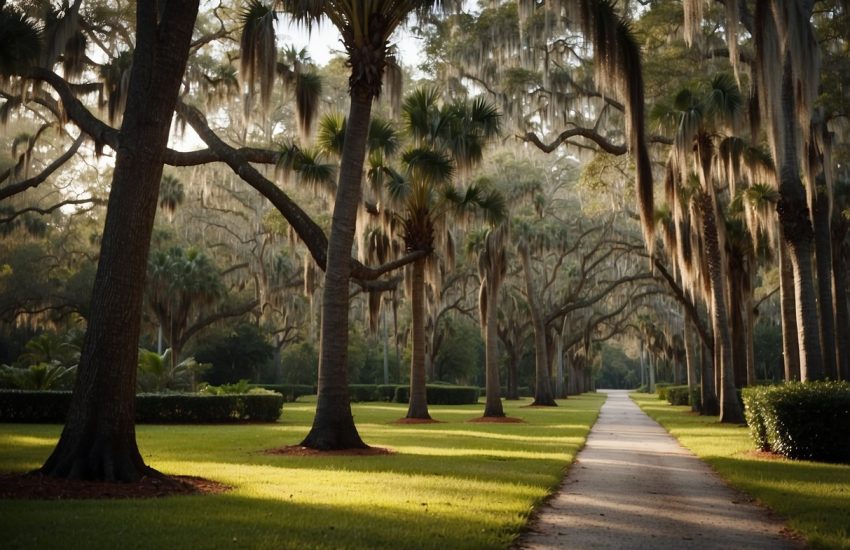What Plant Zone is Charlotte NC? A Guide to Understanding Charlotte’s Plant Hardiness Zone
Charlotte, North Carolina is a city located in the southern region of the United States. As a result, it experiences a humid subtropical climate with hot summers and mild winters. This climate is conducive to the growth of a wide variety of plants, including both native and non-native species. However, for gardeners and landscapers, it is important to know which USDA Hardiness Zone Charlotte falls under to ensure the success of their plants.

According to the USDA Plant Hardiness Zone Map, Charlotte, NC falls under Zone 7b. This means that the average minimum temperature in the area ranges from 5 to 10 degrees Fahrenheit (-15 to -12 degrees Celsius). This information is crucial for gardeners and landscapers to determine which plants are suitable for the area and which ones are not. It is also important to note that while Zone 7b is a relatively mild zone, extreme weather events such as heatwaves and cold snaps can still occur, so it is important to choose plants that are resilient to these conditions.
Understanding USDA Hardiness Zones
What Are Hardiness Zones?
Hardiness zones are geographic regions that are defined based on the average minimum temperature that a particular area experiences during the winter months. These zones help gardeners and horticulturists to determine which plants are most likely to thrive in a particular area based on the climate conditions.
The USDA Hardiness Zone Map
The USDA Hardiness Zone Map is a tool that is used to determine the hardiness zone of a particular region. The map is divided into 13 zones, each of which is defined based on a range of temperatures. The zones are numbered from 1 to 13, with 1 being the coldest zone and 13 being the warmest.
Charlotte, NC falls in USDA Hardiness Zone 7b, which is characterized by an average minimum temperature range of 5°F to 10°F. This means that plants that can tolerate temperatures within this range are most likely to thrive in Charlotte.
It is important to note that hardiness zones are not the only factor to consider when selecting plants for a garden or landscape. Other factors such as soil type, sunlight, and moisture levels also play a crucial role in determining plant health and growth.
In conclusion, understanding USDA Hardiness Zones is essential for gardeners and horticulturists who want to select plants that are most likely to thrive in a particular area. By using the USDA Hardiness Zone Map, they can make informed decisions about which plants to grow based on the climate conditions of their region.
Charlotte’s Planting Zone
Charlotte, North Carolina falls under the USDA Hardiness Zone 7b. This means that the average minimum temperature in the area ranges from 5 to 10 degrees Fahrenheit. Gardeners in this zone can expect to experience occasional extreme winter cold snaps, but can also grow a wide variety of plants that thrive in cooler temperatures.
Factors Affecting Charlotte’s Climate
Charlotte’s location in the Piedmont region of North Carolina means that it experiences a humid subtropical climate. This climate is characterized by hot, humid summers and mild winters. However, the city’s climate is also influenced by microclimates, which are small areas with slightly different weather patterns than the surrounding region.
Additionally, Charlotte has several weather stations that collect data on temperature, precipitation, and other weather-related information. This data is used to make more accurate predictions about weather patterns in the area and to help gardeners make informed decisions about what plants will thrive in their specific microclimate.
Overall, Charlotte’s planting zone is well-suited for a variety of plants that thrive in cooler temperatures, but gardeners should also take into account the city’s microclimates and weather patterns when planning their gardens.
Gardening in Charlotte

Charlotte, North Carolina is located in USDA Hardiness Zone 7b. This means that the average minimum winter temperature in the area is between 5 and 10 degrees Fahrenheit. Gardeners in this zone can grow a wide variety of plants, including trees, shrubs, vegetables, and perennials.
Selecting the Right Plants
When selecting plants for a garden in Charlotte, it is important to choose varieties that are well-suited to the local climate. Some popular options for trees and shrubs include dogwood, redbud, and crepe myrtle. For vegetables, consider planting cool-season crops like lettuce and spinach in the spring and fall, and warm-season crops like tomatoes and peppers in the summer. Perennials like coneflowers, daylilies, and black-eyed Susans are also good choices for the Charlotte area.
Seasonal Gardening Tips
In the winter, gardeners in Charlotte should take steps to protect their plants from frost. Applying a layer of mulch around the base of trees and shrubs can help insulate the roots and prevent damage. In the summer, it is important to water plants regularly, especially during periods of drought. Most plants in the Charlotte area require at least an inch of water per week.
When caring for plants in Charlotte, it is also important to consider their sunlight requirements. Some plants, like tomatoes and peppers, need full sun to thrive, while others, like hostas and ferns, prefer shade. By selecting the right plants and providing them with the proper care, gardeners in Charlotte can enjoy a beautiful and productive garden year-round.
Plant Care and Maintenance

Watering and Fertilization
Proper watering and fertilization are crucial for the health and success of plants in Charlotte, NC. It is important to water plants deeply and regularly, especially during hot and dry weather conditions. Overwatering should be avoided as it can lead to root rot and other issues.
Fertilization should be done in moderation, and it is recommended to use organic fertilizers. Care should be taken to avoid fertilizing during the dormant season. Roses, hydrangeas, azaleas, and camellias are some of the popular plants in Charlotte, and they require specific care and fertilization methods.
Dealing with Pests and Diseases
Pests and diseases can be a major problem for plants in Charlotte, NC. It is important to identify and treat them early to prevent them from spreading and causing damage. Regular inspection and maintenance can help prevent common issues such as spider mites, aphids, and powdery mildew.
Organic and natural methods such as neem oil and insecticidal soap can be used to control pests and diseases. It is important to follow the instructions carefully when using these methods to avoid damaging the plants.
In conclusion, proper plant care and maintenance are essential for the success of plants in Charlotte, NC. By following the tips and advice provided, gardeners can ensure that their plants thrive and remain healthy.


